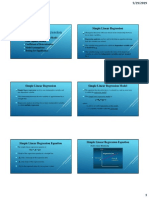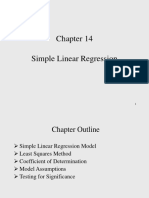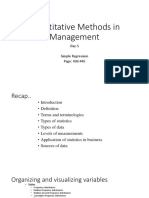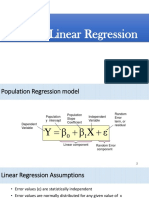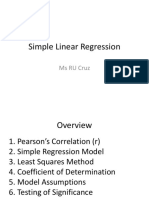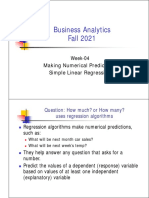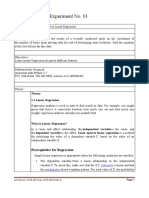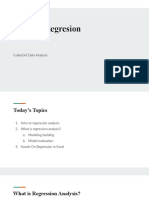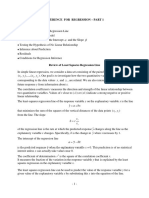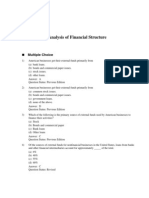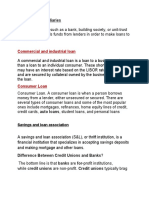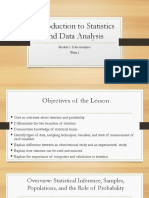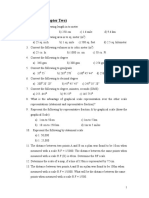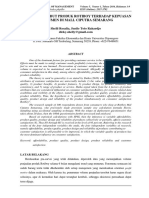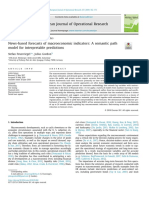0% found this document useful (0 votes)
118 views38 pagesTopic Simple Linear Regression
t = = 3.87
sb1 1.29
6. Make a decision. Since 3.87 > 3.182, reject H0.
7. State the conclusion in words. There is sufficient evidence at the 5% level of significance to conclude that the slope of the regression line is not zero. The number of TV ads and number of cars sold are linearly related.
Uploaded by
Ayesha BajwaCopyright
© © All Rights Reserved
We take content rights seriously. If you suspect this is your content, claim it here.
Available Formats
Download as PPTX, PDF, TXT or read online on Scribd
0% found this document useful (0 votes)
118 views38 pagesTopic Simple Linear Regression
t = = 3.87
sb1 1.29
6. Make a decision. Since 3.87 > 3.182, reject H0.
7. State the conclusion in words. There is sufficient evidence at the 5% level of significance to conclude that the slope of the regression line is not zero. The number of TV ads and number of cars sold are linearly related.
Uploaded by
Ayesha BajwaCopyright
© © All Rights Reserved
We take content rights seriously. If you suspect this is your content, claim it here.
Available Formats
Download as PPTX, PDF, TXT or read online on Scribd
/ 38






